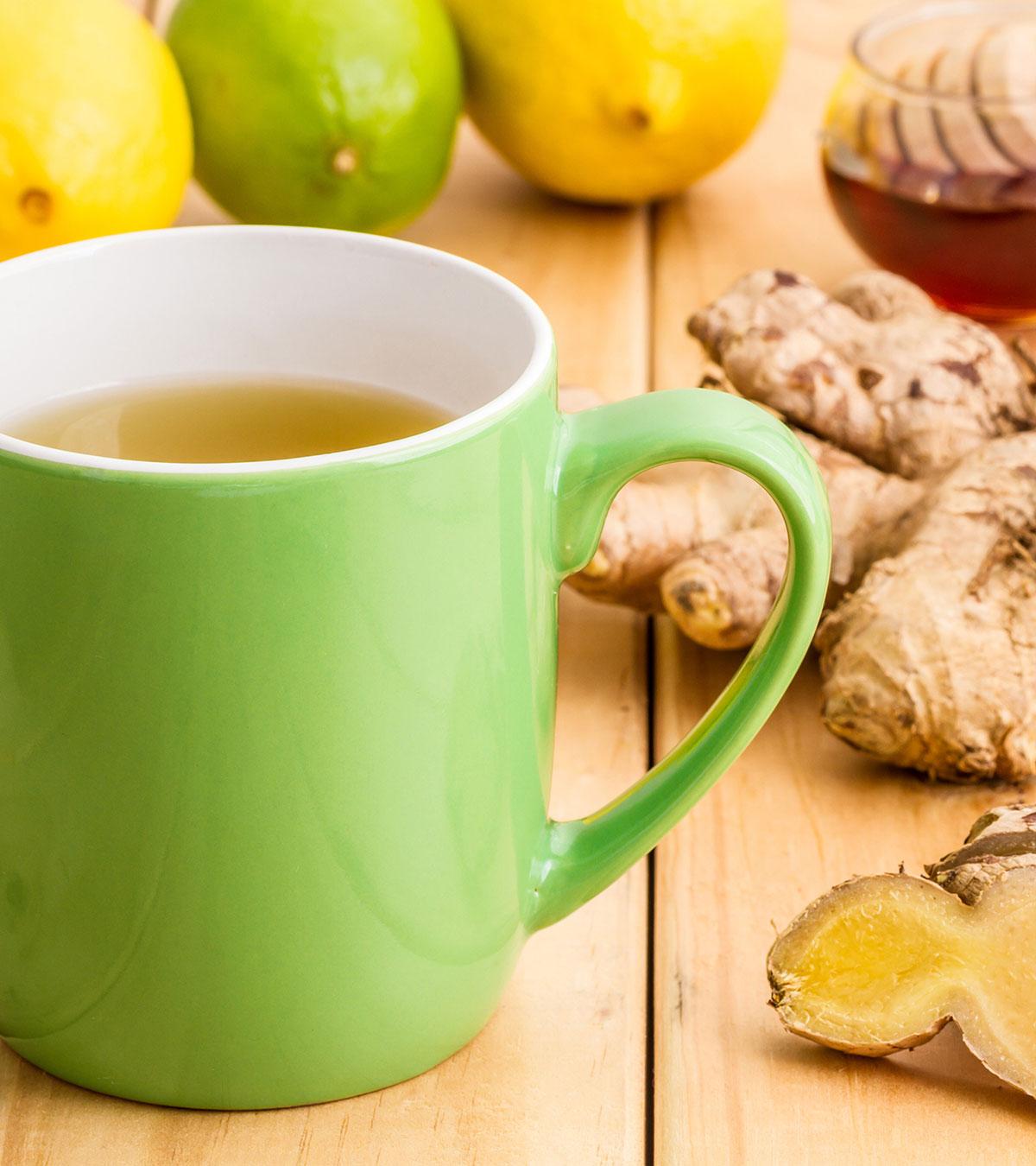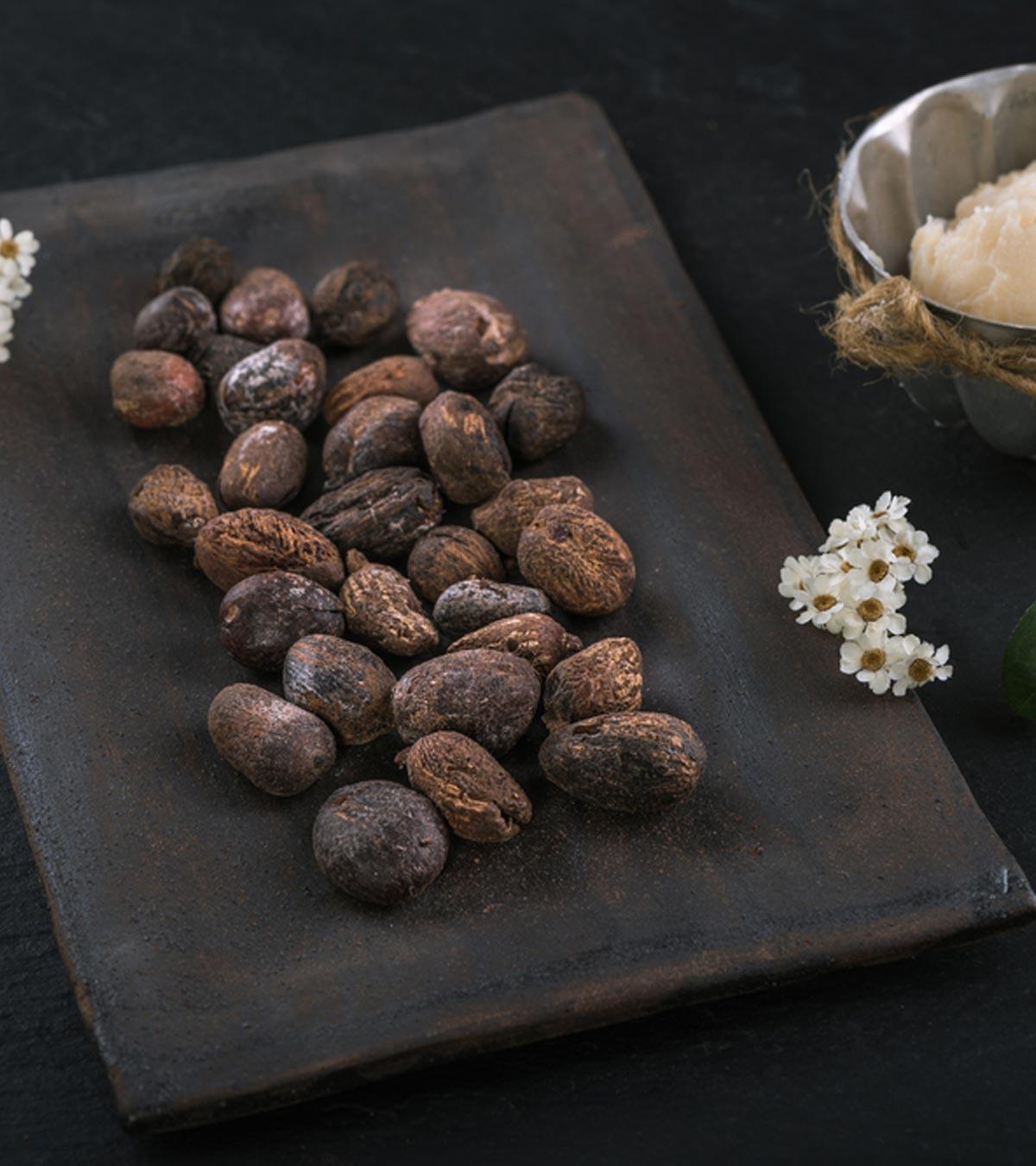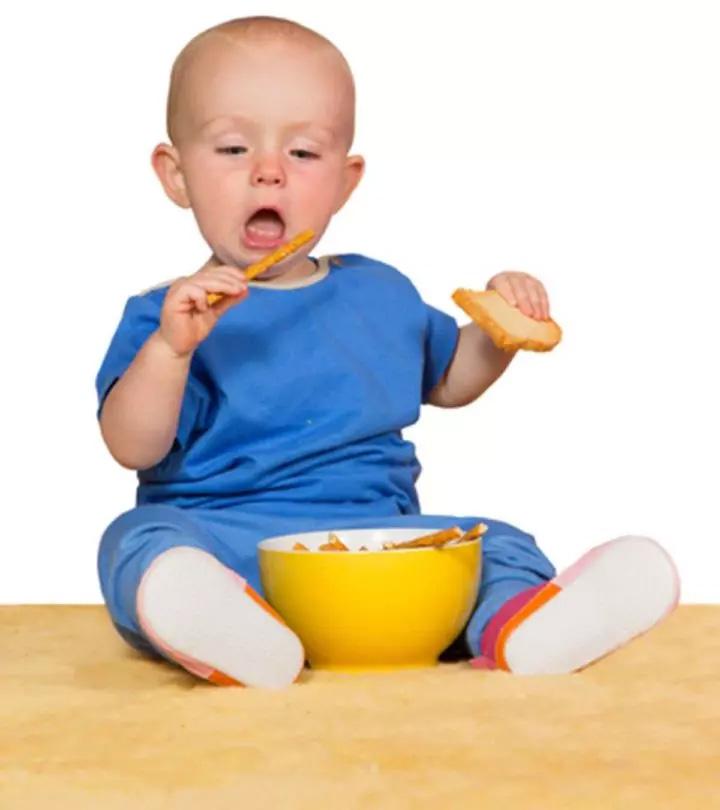
Image: iStock
Rice cereal for babies is a common first food choice in several cultures worldwide. Rice is a grain that can offer a baby several nutrients, such as B vitamins and minerals.
You can prepare rice cereal for babies using simple ingredients such as whole milk and jaggery. However, before feeding rice to babies, knowing the right age and age-appropriate ways to introduce it is essential to help babies reap its benefits fully.
Read on as we tell you the right age and age-appropriate ways to feed rice to babies, its possible health benefits, and side effects for the baby.
When Can Babies Have Rice Cereal?
Infants can have rice cereal after they are six months old, which is also the recommended age for starting solid foods(1)
. Rice cereals are excellent first food for the baby as it is less likely to trigger an allergic reaction when compared to other grains (2). There are some health advantages of starting the baby’s solid food diet with rice cereal.
What Are The Health Benefits Of Rice Cereal?
A baby can reap the following benefits from rice:
- Replenishes the body’s energy: 100g of rice cereal contains about 83g of carbohydrates, making it an excellent food to meet your baby’s nutrition needs. A bowl of rice cereal can provide your baby with the much-needed energy to stay very active.
- Can be good for bones: Rice is a good source of calcium and magnesium – both essential for healthy bones (3). Regular servings of rice cereal, in addition to breast milk, can be an additional source of calcium for the baby.
- Good for the overall health of the body: Rice contains small quantities of micronutrients including zinc, copper, and selenium. These micronutrients play an essential role in keeping several functions of the body going smoothly (4).
Next, we list down the nutrients and the overall nutritional value of a bowl of rice cereal.
Nutritional Value Of 100 g Of Fortified Dry Rice Cereal For Babies:
| Energy: | 390kcal |
| Protein: | 6.65g |
| Fat: | 2.19g |
| Calcium: | 860mg |
| Iron: | 53mg |
| Magnesium: | 37mg |
| Phosphorus: | 273mg |
| Potassium: | 281mg |
| Sodium: | 32mg |
| Selenium: | 5µg |
| Zinc: | 10.92mg |
| Vitamin C: | 2.4mg |
| Vitamin B1 (Thiamin): | 1.195mg |
| Vitamin B2 (Riboflavin): | 1.459mg |
| Vitamin B3 (Niacin): | 23mg |
| Vitamin B6: | 0.885mg |
| Vitamin B9 (Folate): | 230µg |
| Vitamin B12: | 4.6µg |
| Vitamin D: | 8.5µg |
| Vitamin E: | 5mg |
| Vitamin K: | 0.5µg |
Source:
United States Department of Agriculture (5)
How To Make Rice Cereal For Baby?
It is easy to prepare infant rice cereal at home. But before you do, you must know how to select the right type of rice cereal. Read on to know how to choose and prepare the right kind of rice cereal for the baby.
- Select only fortified versions: Always choose iron-fortified rice cereal for your babies. Most infant cereals are fortified with iron and other nutrients, but you can look for plain rice cereal with no fortification if you are sure the baby is getting enough iron from other food sources, confirm this with your pediatrician.
- Check other ingredients: Some infant rice cereal makers may add a small quantity of soy lecithin as a food additive. Avoid these versions if your baby is just beginning solids. It is best to start with one type of grain at a time when you introduce solid foods to the baby. A safe way to do this would be to make the baby’s rice cereal at home.
Michelle, a mother of three, shares her homemade baby rice cereal recipe in her blog. She says, “I did it! I made rice cereal for my baby boy. “I chose to go with an organic brown basmati rice and followed the directions for rice cereal using “powder”. I poured a bunch of rice into my mini food processor – maybe a bit too much. You should probably work in batches of about 1/2 cup. …I would grind the rice for a while in the mini food processor and then dump it into the sifter over a bowl, sift, dump larger pieces back into the food processor, grind some more, sift, grind, sift, grind…I probably ended up with about 1 1/2 cups of powder.
“This morning, I prepared him a bowl… Since this was my baby boy’s first solids, I stuck with 1 1/2 tbsp. of cereal and 1 tbsp. of cold breast milk (the cereal was still really hot so the cold breast milk cooled it off nicely) (i).”
- Mix with formula or breast milk: You will only need a tablespoon of rice cereal to start. Mix a tablespoon of cereal with three to four tablespoons of formula or breast milk. It is best to use freshly pumped breast milk or freshly prepared formula. If you are using frozen breast milk or formula, then let it reach room temperature before using.
Once the cereal and milk are thoroughly mixed, you can feed it to the baby. However, rice cereal is bland and may not be liked by the baby immediately. So how do you get the baby to eat it?
 Quick tip
Quick tipHow To Introduce Rice Cereal To The Baby?
Here are a few tricks to get the baby used to the taste of rice cereal.
- Mix fruits and vegetables: You can add a tablespoon of pureed vegetables or fruits to the rice cereal. Adding your baby’s favorite vegetable, fruit puree, or other baby foods to your baby’s rice porridge or cereal can make them like it even more.
- Explore food ideas for toddlers: If you introduced rice cereal late and in toddlerhood, as part of the baby weaning process, then you have several options available. You can consider adding honey and cow’s milk to the rice cereal for taste. Rice cereal can be a dessert option too. Do note that honey and cow’s milk should not be given to children below the age of 12 months.
As your baby grows older, you can also increase the number of tablespoons of rice cereal you serve them.
Rice cereal has several benefits for infants and toddlers. But parents could still have thoughts lurking in their mind about any possible risks.
Can Babies Be Allergic To Rice Cereal?
Yes. Just like any other food, rice cereal has the potential to trigger an allergy. An example is food protein-induced enterocolitis syndrome (FPIES), which is a rare food allergy affecting the gastrointestinal tract (6). Rice is among the common triggers for the condition. Below are the symptoms of FPIES:
- Vomiting that happens a couple of hours after eating rice
- Diarrhea that usually occurs after vomiting
- Fever
- Lethargy and irritation
- Dehydration, due to continuous diarrhea and vomiting
Eliminating rice from the baby’s diet brings down the symptoms of rice-induced food allergy. If your baby is severely dehydrated, then consult a doctor.
Overall, the chances of rice allergy are less due to the absence of gluten in it. The incidence of rice allergy also varies by region, with fewer cases in Europe and the Americas than in Asia (7).
Rice can be safely eaten by infants with a wheat allergy and immune disorders of the gastrointestinal tract, such as celiac disease (8). It is still best to consult a doctor before feeding rice cereal in case the baby has other allergies.
 Quick tip
Quick tipRice Cereal Alternatives
While rice allergy is relatively uncommon, if you find that your baby is allergic to rice, you can look for other safer rice cereal alternatives. Oats and iron-fortified cereals made from maize, rye, sorghum, millets (ragi), wheat, barley, teff, and quinoa can also be used as rice cereal alternatives. It is also advisable to feed single-grain cereal over multigrain cereals for the first time so one can identify if the baby is unable to tolerate any grain at a time (9) (10). Additionally, instead of rice cereal, you can also give fruits, vegetables, or lentil purees to your baby.
In the next section, we answer some commonly asked questions about rice cereal for babies.
Frequently Asked Questions
1. Does rice cereal cause constipation?
No. Rice cereal in itself does not cause constipation. But the iron content in fortified cereals can increase the iron levels in the body and make the baby a little constipated, especially if your baby gets iron from other dietary sources. To avoid constipation, give your baby plain, non-fortified cereal when they are getting enough iron from other food sources (11).
2. Does rice cereal contain arsenic?
Rice naturally contains arsenic, a compound that is commonly found in soil and water. The rice plant has a natural tendency to absorb more arsenic than other grains. Experts state that maintaining a balance of rice cereal and other grains in the baby’s diet prevents the infant from receiving excessive arsenic (12). Choosing good quality rice cereal from a trusted brand could mitigate the risk of excessive arsenic exposure to some extent.
3. Is it okay to feed rice cereal in a bottle?
No. You must ideally use a spoon to feed rice cereal and other solids to a baby. A bottle is used to feed liquid foods such as breast milk or formula. Adding rice cereal to a bottle of baby formula or milk can lead to excessive weight gain and also act as a choking hazard (13).
4. How many times a day should I feed rice cereal to my baby?
You can give rice cereal to your baby two times a day. It can be from three to nine tablespoons divided into two meals (14).
5. Does rice cereal help babies sleep?
Many parents follow the practice of putting rice cereal in the baby feeding bottle to help their babies sleep through the night. However, the American Academy of Pediatrics does not recommend using rice cereal in the bottle to improve sleep in infants. It is harmful and may cause choking, constipation, or excessive weight gain (15).
6. What can I use instead of rice cereal for my baby?
Oatmeal is gluten-free, similar to rice cereal (hence less possibility of an allergic reaction). Rice cereal has been found to contain trace amounts of arsenic. Long-time consumption of rice cereal may increase arsenic exposure in babies; hence, you can use oatmeal over rice cereal (16).
There are several attributes about rice cereal that make it the first choice of solid food for a little one. The rice grain does not contain gluten and is readily accepted by the baby’s digestive system, which is new to solid food. Remember to strike a balance between rice and other grains. Making rice cereal a part of the baby’s balanced solid food diet is the best way to reap its maximum benefit.
Follow the golden rule of never eating the same thing frequently. Variety is the key, this helps avoid exposure to heavy metals and introduces variety in a baby’s diet and helps those taste buds.
Infographic: How To Feed Rice Cereal To Babies For The First Time
Rice cereal can be difficult to swallow or digest for babies, depending on how it is made and fed. Our infographic brings simple tips that parents should follow to feed rice cereal to babies safely. So go through the infographic and pin it near the feeding table for reference. Illustration: Momjunction Design Team
Key Pointers
- Rice cereal is a common weaning food in several cultures that can provide babies with energy and essential nutrients such as B vitamins, copper, and selenium.
- It is less likely to trigger allergic reactions when compared to other cereals and grains such as wheat.
- Preparing rice cereal in age-appropriate ways is important to ensure the baby can swallow and digest it comfortably.
Image: Dall·E/MomJunction Design Team
Get your questions and concerns about feeding your baby rice cereals answered and resolved by a medical professional in this informative video.
Personal Experience: Source
MomJunction articles include first-hand experiences to provide you with better insights through real-life narratives. Here are the sources of personal accounts referenced in this article.
i. Homemade baby cereal;https://cookcraftchaos.wordpress.com/2012/02/14/homemade-baby-cereal/
References
1. Food for Baby’s First Year; Ohio State University
2. Age-Appropriate Nutrition, Feeding, and Support for Breastfeeding; Texas A&M University
3. Magnesium plays important role in building strong bones; University of Southern California
4. Precious metals and other important minerals for health; Harvard Medical School
5. Babyfood, cereal, rice, dry fortified; U.S. Department of Agriculture
6. Food Protein-Induced Enterocolitis Syndrome (FPIES); Children’s Hospital of Philadelphia
7. Allergenic Foods and their Allergens; University of Nebraska-Lincoln
8. Allergy information for Rice; University of Manchester
9. Baby Food for Thought: How Safe is Rice Cereal?; University of Rochester Medical Center Rochester
10. Michelle Klerks et al.; Infant Cereals: Current Status, Challenges, and Future Opportunities for Whole Grains; NCBI
11. Baby Food Basics; University of Utah
12. Is rice cereal safe for your child?; Oregon Health & Science University
13. Cereal in a Bottle: Solid Food Shortcuts to Avoid; American Academy of Pediatrics
14. Baby Food for Thought: How Safe is Rice Cereal?; University of Rochester Medical Center
15. Ruth Milanaik et al.; Prevalence and Parental Perceived Efficacy of Rice Cereal in Bottles Used as a Natural Sleep Aid for Infants Aged 0-11 Months; American Academy of Pediatrics
16. Oatmeal: The Safer Alternative for Infants & Children Who Need Thicker Food; American Academy of Pediatrics
17. FAQ: Introducing Your Baby to Solid Foods; The Regents of The University of California.
Read full bio of Jyoti Benjamin
Read full bio of Swati Patwal
Read full bio of Ghazia Shah

























